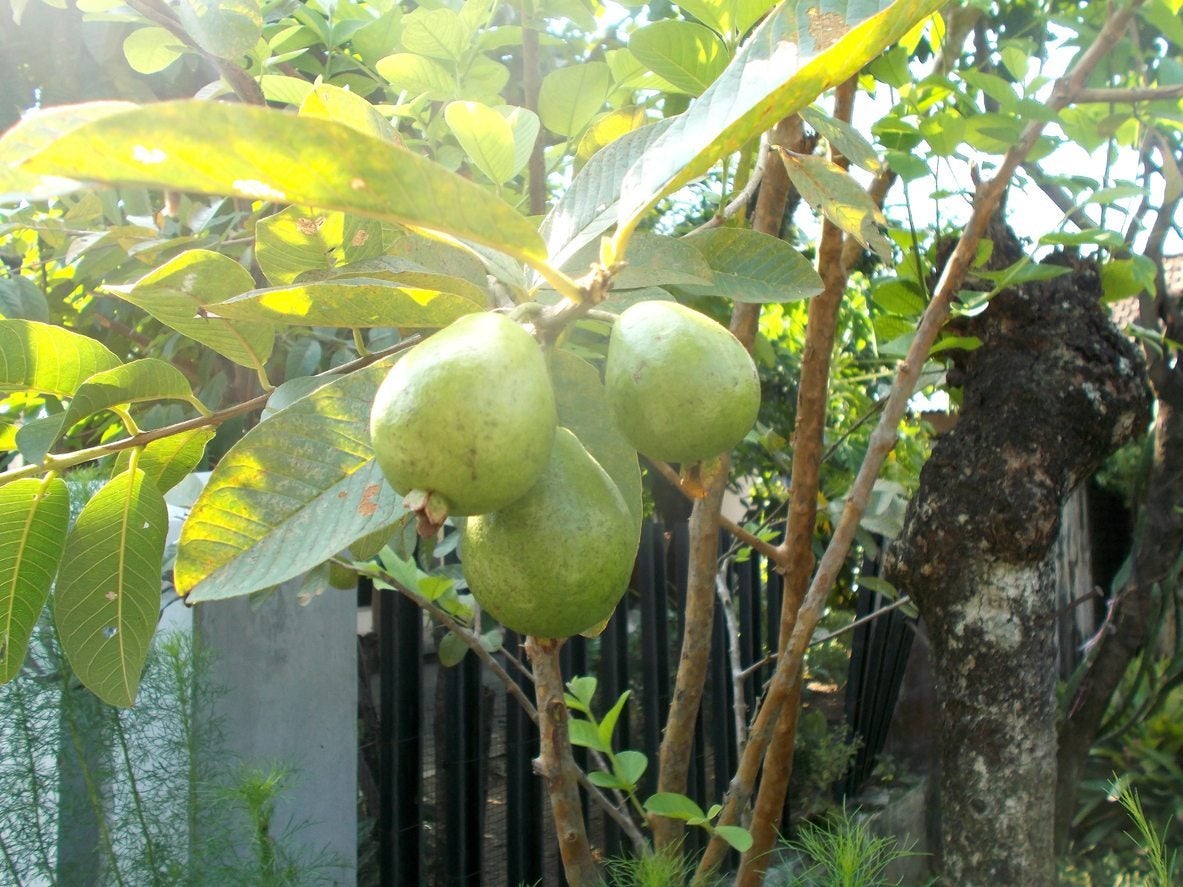Guava Transplant Tips: When Can You Move A Guava Tree


If your guava tree has outgrown its current location, you might be thinking of moving it. Can you move a guava tree without killing it? Transplanting a guava tree can be easy or it can be hard depending on its age and root development. Read on for guava transplant tips and information on how to transplant a guava.
Moving Guava Fruit Trees
Guava trees (Psidium guajava) come from the American tropics and the fruit is grown commercially in Puerto Rico, Hawaii, and Florida. They are small trees and rarely get above 20 feet (6 m.) tall. If you are transplanting a guava tree, your first step is to find a suitable new site for it. Be sure the new site is in full sun. Guava trees accept a wide range of soil types and grow well in sand, loam, and muck, but prefer a pH of 4.5 to 7. Once you have located and prepared the new site, you can get on with moving guava fruit trees.
How to Transplant a Guava
Consider the age and maturity of the tree. If this tree was just planted a year ago or even two years ago, it won’t be hard to get all of the roots out. Older trees, however, may require root pruning. When you transplant established guava trees, you risk damaging feeder roots that are charged with absorbing nutrients and water. Root pruning can keep the tree healthy by encouraging it to produce new, shorter feeder roots. If you are transplanting a guava tree in spring, do root pruning in the fall. If moving guava trees in autumn, root prune in spring or even a full year in advance. To root prune, dig a narrow trench around the root ball of the guava. As you go, slice through longer roots. The older the tree, the larger the root ball can be. Can you move a guava tree immediately after root pruning? No. You want to wait until new roots grow in. These will be moved with the root ball to the new location.
Guava Transplant Tips
The day before the transplant, water the root area well. When you are ready to start the transplant, reopen the trench you used for root pruning. Dig down until you can slip a shovel under the root ball. Gently lift out the root ball and set it on a piece of untreated natural burlap. Wrap the burlap around the roots, then move the plant to its new location. Place the root ball in the new hole. When you are moving guava trees, set them into the new site at the same soil depth as the old site. Fill in around the root ball with soil. Spread several inches (8 cm.) of organic mulch over the root area, keeping it off the stems. Water the plant well just after transplant. Continue irrigating it throughout the entire next growing season.
Gardening tips, videos, info and more delivered right to your inbox!
Sign up for the Gardening Know How newsletter today and receive a free copy of our e-book "How to Grow Delicious Tomatoes".

Teo Spengler is a master gardener and a docent at the San Francisco Botanical Garden, where she hosts public tours. She has studied horticulture and written about nature, trees, plants, and gardening for more than two decades. Her extended family includes some 30 houseplants and hundreds of outdoor plants, including 250 trees, which are her main passion. Spengler currently splits her life between San Francisco and the French Basque Country, though she was raised in Alaska, giving her experience of gardening in a range of climates.
-
 Looking For Plants To Give You The Soft And Fuzzies? Try These 5 Fuzzy Leaf Plant Options
Looking For Plants To Give You The Soft And Fuzzies? Try These 5 Fuzzy Leaf Plant OptionsLovers of texture, drama, silver foliage and tactile plants will adore these special sensory garden additions. These fuzzy leaf plant options will leave you all aglow
By Susan Albert
-
 Get Ready For A Summer Of Hummers! Grow These Full Sun Hummingbird Plants and Flowers
Get Ready For A Summer Of Hummers! Grow These Full Sun Hummingbird Plants and FlowersIf you’re lucky enough to enjoy a sunny backyard, make sure you are maxing out on your pollinator opportunities and grow these full sun hummingbird plants and flowers
By Tonya Barnett